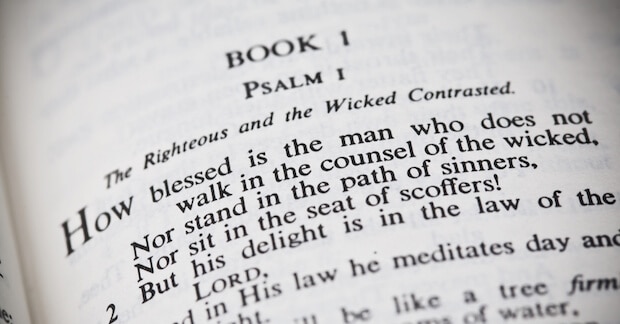
Question: Why does the text for the Responsorial Psalm sometimes differ between what is printed in the hymnal and what is sung?
Answer: There are two layers to this answer—the responses and the verses.
—For the responses, as long as all the words are present, composers have artistic license to repeat words or phrases to better fit the music or the mood conveyed. We usually see this principle utilized with shorter responses like the one we have today. Although not utilized in our psalm for this weekend’s liturgy, a composer could have easily repeated the word “Blessed,” the phrase “Blessed are they,” or even the entire response.
—What about the verses? Sometimes what is sung is fairly different from what is printed. This answer is a little more complicated and it is due to approved translations of the psalms. Publishers of liturgical books and resources are required by copyright polices of the USCCB to print the 1998/2002 Lectionary translation which comes from the New American Bible. However, when the responsorial psalm is sung,—and it is supposed to be sung whenever possible—, any translation that has received an imprimatur from the Holy See is allowed to be utilized. There are up to seven different translations which are permissible! The most commonly utilized translations are the Lectionary, the Grail Psalms, and the Revised Grail Psalter.
 Why are there so many translations? As the Psalms were composed mostly for Jewish liturgy, they remain essential to the daily liturgical life of the Church. Proper translation has been difficult dating all the way back to Saint Jerome who translated them from Greek and Hebrew into Latin. He himself produced three translations trying to capture and illuminate ideas and idioms of these great prayers! As Biblical scholarship has continued to grow over the last 50+ years, more is known about the ancient languages and cultures. Scholars continue to seek to produce translations which have melodic and smooth texts while remaining faithful to the original language texts. We will get into more detail next week in Part II!
Why are there so many translations? As the Psalms were composed mostly for Jewish liturgy, they remain essential to the daily liturgical life of the Church. Proper translation has been difficult dating all the way back to Saint Jerome who translated them from Greek and Hebrew into Latin. He himself produced three translations trying to capture and illuminate ideas and idioms of these great prayers! As Biblical scholarship has continued to grow over the last 50+ years, more is known about the ancient languages and cultures. Scholars continue to seek to produce translations which have melodic and smooth texts while remaining faithful to the original language texts. We will get into more detail next week in Part II!


Comments
There are no comments yet - be the first one to comment: